 The Internet browser has become an indispensable tool in the modern workplace – even outperforming other commonly used software like Microsoft Office or the CRM apps commonly found in corporate settings. However, traditional browsers weren’t designed with enterprise needs in mind; they were built for consumers, focusing on shopping, streaming, and social media. This challenge forces IT teams to develop a browser cybersecurity strategy, resulting in a complex, fragile, and costly environment that often frustrates users with delays and disruptions.
The Internet browser has become an indispensable tool in the modern workplace – even outperforming other commonly used software like Microsoft Office or the CRM apps commonly found in corporate settings. However, traditional browsers weren’t designed with enterprise needs in mind; they were built for consumers, focusing on shopping, streaming, and social media. This challenge forces IT teams to develop a browser cybersecurity strategy, resulting in a complex, fragile, and costly environment that often frustrates users with delays and disruptions.
Imagine a browser built specifically for enterprises, a tool designed to meet the unique security, IT, and productivity demands of organizations while maintaining the familiar user experience. This is the promise of the enterprise browser, a secure-by-design solution that offers solid protection and a simplified and cost-effective platform, all while delivering a seamless and efficient experience for employees. In this article, we explore the value of the enterprise browser and share implementation insights for organizations considering this technology as a core component of their cybersecurity strategy.
What Is An Enterprise Browser?
Enterprise browsers are specialized web solutions built to meet the specific requirements of businesses, unlike traditional consumer browsers. They integrate reliable security measures, centralized IT controls, and performance enhancements into the core browsing experience.
Gartner predicts that enterprise browsers or extensions will play a role in about 25% of web security scenarios in the near future, making them essential for organizations aiming to enhance their cybersecurity strategies. By offering security, adaptability, compatibility, and cost-effectiveness in a single platform, these browsers empower businesses to create a secure and efficient work environment.
Eight Enterprise Browser Use Cases
As part of a comprehensive cybersecurity strategy, an enterprise browser addresses various challenges and has the potential to transform your organization's digital workspace through the following benefits:
1. Solve The SaaS Data Leakage Problem
The shift to software-as-a-service (SaaS) and web applications has exposed critical data and workflows to consumer browser vulnerabilities. To mitigate these risks, organizations have traditionally relied on a patchwork of tools which is often ineffective and complicated.
An enterprise browser offers a fundamentally different approach to cybersecurity. By securing data directly within SaaS and web applications, it eliminates the need for multiple, and often contrasting, security solutions. Businesses can benefit from the following capabilities:
- Granular Access Control: Protect any application's specific pages, workflows, and data through seamless IdP integration. For example, secure legacy in-house web applications with multi-factor authentication (MFA) without requiring code modifications.
- Comprehensive Data Protection: Control how data moves within and outside applications. Prevent sensitive information, such as customer records, from being inadvertently shared or copied.
- Conditional Access: Ensure devices meet stringent security requirements before granting access to critical SaaS applications. Continuously assess devices for factors like patch levels, disk encryption, and endpoint protection status to enforce a strong security posture.
Organizations gain a closed-loop system where security and access policies can be enforced consistently across all applications. This results in reliable data protection without compromising user experience or IT complexity.
2. A Radical And Sensible Departure From VDI
Many organizations have turned to virtual desktop infrastructure (VDI) to provide remote access to critical applications. However, VDI often introduces substantial costs, complexity, and user frustration.
An enterprise browser offers a modern, secure, and efficient alternative. Organizations can significantly reduce VDI reliance, thereby reducing costs, and enhancing user experience. Key features of include:
- Data segregation and application isolation: Enterprise browsers protect sensitive data by isolating it from the device. For example, when used on unmanaged devices, it can prevent data from being saved, downloaded, or copied from enterprise applications.
- Remote access capabilities: Enterprise browsers enable secure remote access to internal enterprise resources without requiring a separate virtual private network (VPN) client, supporting hybrid and remote workforces.
- Broad application support and native user experience: Enterprise browsers support a wide range of applications, including web applications, secure shell (SSH) access, and remote desktop protocol (RDP) sessions, without the performance penalties associated with virtualization.
3. Zero Trust Integration
Zero trust is a critical security model that shifts focus from static network perimeters to user identity, device health, and restricted resource access.
Unlike consumer browsers, an enterprise browser actively incorporates zero trust practices directly into the browser environment, where most application and data access occurs. This approach strengthens enterprise browser security and aligns with the overall cybersecurity strategy.
To effectively implement a seamless and end-to-end zero trust experience, an enterprise browser must possess the following key capabilities:
- Verify user identity: An enterprise browser natively integrates with your Identity Provider (IdP) and offers customizable multi-factor authentication (MFA) options for accessing sensitive applications.
- Assess device posture: The enterprise browser evaluates device security configurations, including OS patch levels, disk encryption, and the presence of Mobile Device Management (MDM) and Endpoint Detection and Response (EDR) agents, network connection, and location.
- Enable zero trust network access (ZTNA): The enterprise browser establishes a secure ZTNA connection to private applications only after validating user identity, device posture, and application access permissions.
4. Third-Party Access Management
As organizations expand their workforce through contractors or business process outsourcing (BPOs), ensuring efficient and secure access becomes a critical challenge. Managed laptops or virtual desktops are usually the solutions, but these often introduce significant costs, delays, and user frustrations.
An enterprise browser provides a streamlined alternative. Organizations can rapidly grant access by enabling contractors to use their existing devices while maintaining complete control over enterprise browser security and data. Unlike virtual desktops, these eliminate performance bottlenecks and simplify administration.
Enterprise browsers offer several key benefits:
- Ease of deployment: Contractors can independently install the enterprise browser on their devices without IT intervention, streamlining the onboarding process.
- Data protection: Application and data boundaries prevent sensitive information leakage through actions like copying, pasting, screenshots, or downloads.
- Seamless connectivity: Integrated zero-trust network access allows contractors to securely connect to private applications without complex configurations.
By adopting an enterprise browser as part of your cybersecurity strategy, you can balance productivity and protection, mitigating risks associated with third-party access.
5. Building Data Loss Prevention
Modern work environments extend beyond the office, involving unmanaged devices, networks, and a growing array of SaaS and web applications. However, legacy data loss prevention (DLP) platforms are not equipped for these conditions.
The enterprise browser embeds data loss protection within the platform, creating a more effective and efficient cybersecurity strategy tailored to diverse work settings and businesses. The following features ensure enterprise browser security and protect sensitive information from unauthorized access and leakage:
- Application and data boundaries: Enterprise browsers keep sensitive data within defined enterprise applications, preventing leakage through any means of egress. For example, employees handling sensitive financial records can transfer data between various financial reporting applications. However, an enterprise browser prevents this data from being moved to personal emails or downloaded to desktops.
- Data masking: Enterprise browsers hide sensitive data on a page until it is needed. For instance, customer support staff see redacted personal contact information, which they can selectively unmask if necessary to resolve an issue. Each unmasking event and the user who viewed it is logged for auditing purposes.
- DLP detectors: Enterprise browsers detect and flag sensitive data to prevent leakage, regardless of the application it originates from. For example, they can detect attempts to download files containing credit card numbers or social security numbers, preventing leakage and alerting internal review teams.
6. Integrating Apps From Mergers, Acquisitions, And Divestitures
Merging or acquiring another company can be complex, as integrating IT systems alone can take months or even years. This could hinder communication and collaboration precisely when they are most crucial.
An enterprise browser can accelerate this integration by addressing key pain points during a merger and acquisition:
- Providing immediate and extensive access to all private and internal applications, resources, and communication tools across diverse networks – all while enforcing consistent IT and security policies such as ZTNA, thus bypassing VPN or infrastructure changes
- Allows new employees to use their personal laptops or other devices to seamlessly connect with their colleagues.
Watch: WEI Cyber Warfare & Beyond Roundtable Discussion

7. Adaptability And Compatibility With Various Devices
With the rise of remote work, enterprise browsers have become essential for enabling secure access to applications from any location. Additionally, these offer a flexible solution for employees who frequently use personal devices at work to enable secure access to company resources while keeping personal data separate. This capability provides a more user-friendly and cost-effective alternative to traditional VPN or VDI solutions, making enterprise browsers a key component of a modern cybersecurity strategy.
These browsers are built on the Chromium engine, the same technology that powers Chrome, Edge, Brave, and other popular consumer browsers. They support a wide range of web applications, including SaaS platforms, internal web apps, and legacy applications. This broad compatibility ensures a seamless user experience and new employee onboarding across different tools and systems. Additionally, new applications can be introduced to the workforce effortlessly, eliminating the need for complex installations.
8. Support Continued Operations During Security Incidents
To contain cyber threats, IT teams often shut down endpoints and disable network segments during incident response. This forces employees to halt work or use alternative devices, causing significant business disruptions.
The enterprise browser empowers staff to maintain uninterrupted operations during severe cybersecurity incidents by enabling self-service installation on personal devices or other hardware. This allows employees to access critical communications and business applications instantly, strengthening the overall cybersecurity strategy.
Moreover, the security features of an enterprise browser automatically adapt to device conditions, which is important in safeguarding against data breaches. This centralized management also streamlines incident response and facilitates a gradual restoration of business operations.
Enterprise Browser Deployment Experience
Deploying an enterprise browser built on the Chromium engine can be streamlined for compatibility with a wide range of web applications. The deployment process typically involves the following steps:
- Planning and assessment: IT teams assess the organization's current infrastructure and identify which security and productivity tools can be integrated into the enterprise browser. This step ensures that the deployment will meet the organization’s specific needs.
- Configuration and customization: The enterprise browser is configured to align with the organization’s security policies, access controls, and productivity requirements. Customizations might include branding the browser with the organization’s logo or setting up specific workflows and automation.
- Deployment: The browser is deployed across the organization through a centralized management console or by allowing users to self-install on their devices. This flexibility ensures the deployment can scale according to the organization’s size and needs.
- Monitoring and support: Post-deployment, IT teams monitor browser activity to ensure compliance with security policies and gather data to optimize performance. The centralized management console allows for quick adjustments and updates, ensuring the browser remains aligned with evolving organizational needs.
Final Thoughts
While developing a basic browser might seem simple, creating a truly reliable enterprise-grade solution requires more than just the software. It demands a vendor who can provide a comprehensive suite of supporting services, exceptional customer support, and unparalleled scalability.
Choosing the right enterprise browser vendor is crucial for ensuring a resilient cybersecurity strategy. Organizations should look for vendors with extensive experience, comprehensive security features, mobile compatibility, a user-friendly interface, and flexible deployment options.
Fortunately, WEI and our team of experts – together with the enterprise browser expertise and resources of Island – provide a tailored solution that recognizes businesses’ specific cybersecurity hurdles. Contact our cyber experts today to learn how our approach can significantly enhance your overall cybersecurity strategy.
Next Steps: WEI provides enterprises with increased visibility at all touch points of the IT estate, and that includes at the edge and applications within the data center. How can we help your enterprise with its current and future cybersecurity architecture? Contact our team to get started.














